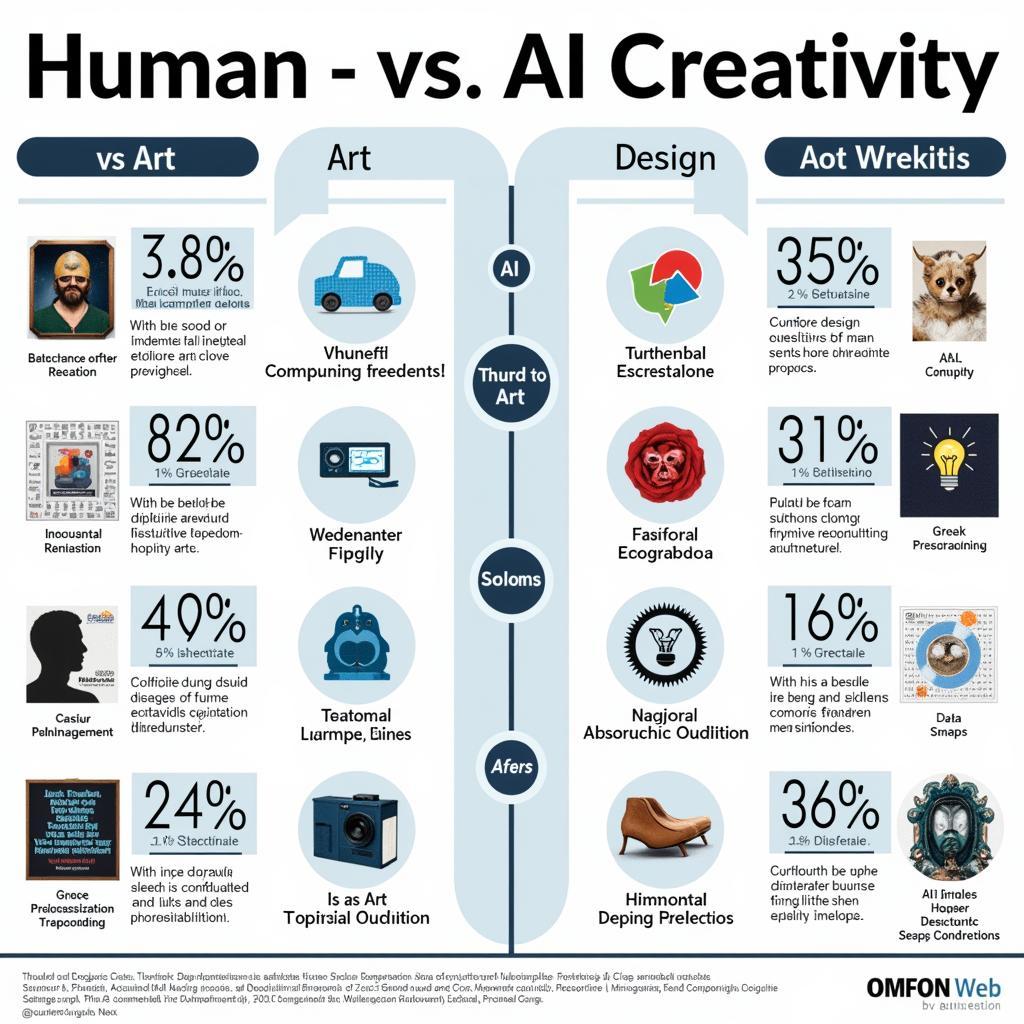The impact of automation on creative industries has become an increasingly common topic in IELTS Writing Task 2 examinations. Based on analysis of past papers and current trends, this theme has appeared in various forms over the past two years, particularly in questions exploring technological advancement and workforce transformation. Let’s examine how to tackle this challenging topic with sample essays across different band scores.
As the impact of technological unemployment continues to reshape various sectors, understanding its implications for creative industries has become crucial for IELTS candidates. Here’s a recent exam question that exemplifies this theme:
Some people believe that artificial intelligence and automation will eventually replace human creativity in art, music, and design. To what extent do you agree or disagree with this statement?
Analysis of the Question
This question requires candidates to:
- Take a clear position on AI’s role in creative industries
- Evaluate the relationship between automation and human creativity
- Support arguments with relevant examples
- Consider both current and future implications

Band 8 Sample Essay
The notion that artificial intelligence could supplant human creativity has sparked intense debate, particularly as how digital technologies affect human creativity becomes increasingly evident. While I acknowledge AI’s growing capabilities, I strongly disagree that it will completely replace human creativity in artistic fields.
Firstly, human creativity stems from emotional experiences and cultural understanding that AI cannot truly replicate. Artists, musicians, and designers draw inspiration from personal struggles, cultural heritage, and complex human emotions – elements that machines, however sophisticated, cannot authentically experience or express. For instance, Vincent van Gogh’s “Starry Night” reflects not just visual skill but deep emotional turmoil and spiritual connection that AI cannot genuinely replicate.
Moreover, creativity often involves breaking established rules and conventions – something AI, being programmed with existing patterns, struggles to achieve genuinely. While AI can combine existing elements in new ways, it cannot truly innovate or challenge fundamental artistic paradigms. Consider how revolutionary artists like Picasso deliberately abandoned traditional techniques to create entirely new art forms – a level of radical thinking currently beyond AI’s capabilities.
However, AI will undoubtedly become a powerful tool that enhances rather than replaces human creativity. In modern design, impact of automation on job availability has actually created new opportunities where humans and machines collaborate. Designers use AI to explore multiple variations quickly, while maintaining human judgment for final creative decisions.
In conclusion, while AI will continue to evolve and influence creative industries, it will serve as a sophisticated tool rather than a replacement for human creativity. The future lies in harmonious collaboration between human imagination and technological capabilities.
Band 6.5 Sample Essay
These days, many people think that AI and automation will take over creative jobs from humans. I partially agree with this idea, but I think humans will still be important in creative work.
One reason why AI cannot completely replace humans is because art needs emotion. Humans have feelings and experiences that help them make meaningful art. For example, when musicians write songs about love or sadness, they use their real feelings. Computers don’t have real feelings, so they cannot make art that touches people’s hearts.
Also, Changing careers during working life: reasons and positive or negative development for society shows that creative jobs are actually growing. Many people are becoming designers and artists because these jobs need human thinking. AI can help make some parts of art, but it cannot think of new ideas like humans can.
However, AI is getting better at making some types of art. It can make pictures and music that look and sound good. Some companies use AI to make basic designs, which is faster than humans. But these designs often need humans to make them better and more special.
In conclusion, I think AI will be a helpful tool for artists and designers, but it cannot replace human creativity completely. The best results will come when humans and AI work together.
Analysis of Band Scores
Band 8 Essay Features:
- Sophisticated vocabulary: “supplant,” “paradigms,” “revolutionary”
- Complex sentence structures
- Clear progression of ideas
- Strong cohesive devices
- Well-developed arguments with specific examples
Band 6.5 Essay Features:
- Simple but clear vocabulary
- Basic sentence structures
- Some cohesive devices
- Limited idea development
- Basic examples
Key Vocabulary to Remember
- Supplant (v) /səˈplɑːnt/ – to replace something
- Paradigm (n) /ˈpærədaɪm/ – a typical pattern or model
- Revolutionary (adj) /ˌrevəˈluːʃəneri/ – completely new and different
- Innovative (adj) /ˈɪnəveɪtɪv/ – introducing new ideas
- Harmonious (adj) /hɑːˈməʊniəs/ – working well together
In preparing for similar topics, candidates should consider how automation affects different creative fields uniquely. Practice writing about specific examples where AI and human creativity intersect, always maintaining a balanced perspective that acknowledges both benefits and limitations of automation in creative industries.
For practice, try writing your own essay on this topic and share it in the comments section for feedback. Consider related topics like the role of AI in education, journalism, or entertainment for additional practice.